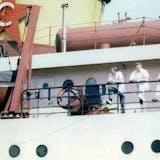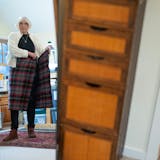Food Network viewers recognize her from the absorbing "Heartland Table" series, and discerning cookbook readers are more than familiar with the Minnesota author through her James Beard award-winning "The New Midwestern Table."
But for those who think they know Amy Thielen, think again.
She is rectifying that situation with an evocative and enlightening new memoir. "Give a Girl a Knife" (Clarkson Potter, $26) takes readers deep into her own urban-rural divide.
First, she illuminates the long winters she spent cooking in the New York City kitchens of top chefs David Bouley, Daniel Boulud and Jean-Georges Vongerichten. Then she turns to summers in the woods just outside her hometown, living in a rustic, off-the-grid house built by Aaron Spangler, her artist husband and fellow native of Park Rapids, Minn.
What a contrast: 80-hour weeks in high-pressure, peak-experience restaurant kitchens, and summers growing and preserving vegetables and fruits — and cooking with no running water or electricity — while slowly but surely discovering and embracing her family's culinary roots, a branch of which is the famed Thielen Meats in Pierz, Minn.
We talked with Thielen about the military appeal of commercial kitchens, the joys of pepper-shaped tomatoes and the forgotten beauties locked within the concept of "making do."
Q: Why a memoir?
A: I was trying to figure out what kind of narrative this book would take. The "homecoming" narrative was embedded into essays in the cookbook. Writing this book really did help me figure out all the unanswered and unresolved things about coming back home. What drew me back here, so strongly? I found those answers while I was writing the book. Those issues naturally arose from that, and then I thought, "Do I dare write a memoir at 40?" I'm 42 now. It's not an autobiography, it's not a beginning-to-end narrative. Memoirs usually concentrate on a discrete story.


